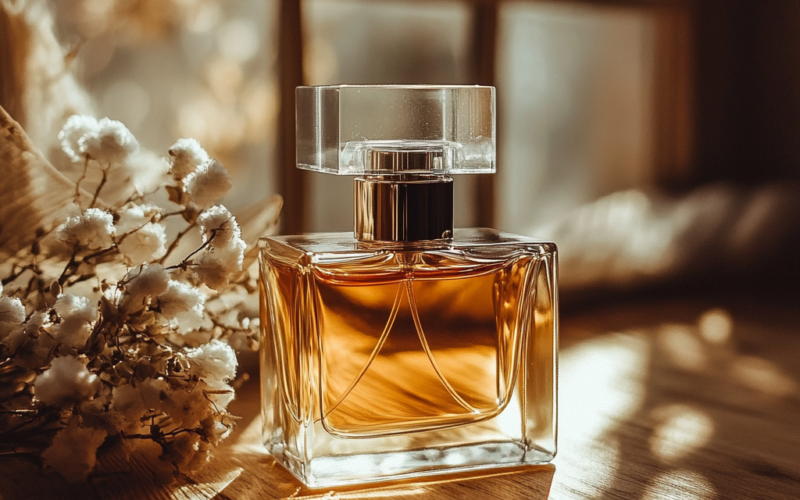Choosing a high-quality perfume is more than just picking a pleasant scent; it’s about finding a fragrance that matches your personality, lasts long, and is composed of superior ingredients. With countless options on the market, many buyers struggle to differentiate between authentic luxury perfumes and low-quality imitations. A well-crafted perfume is a symphony of carefully blended ingredients that evolve over time, leaving a lasting impression.
In this article, we will explore the key elements that define a premium fragrance, from understanding the perfume pyramid to analyzing ingredients and testing methods. Whether you’re a novice or a seasoned perfume enthusiast, these expert insights will help you make an informed decision and avoid common pitfalls.
Understand the Perfume Pyramid: Notes that Define Quality
Every high-quality perfume is structured around a perfume pyramid, which consists of three distinct layers: top, middle (heart), and base notes. This layered composition determines how the fragrance evolves over time. The top notes provide the first impression, often light and fresh, while the middle notes emerge after the initial scent fades, forming the heart of the perfume. Finally, the base notes linger the longest, giving depth and richness to the fragrance.
The balance between these layers is crucial in high-quality perfumes. A well-crafted fragrance ensures that the transition between the notes is seamless, creating a complex and harmonious scent profile. Inferior perfumes, on the other hand, may have an overpowering start but quickly fade, lacking the depth that distinguishes luxury fragrances.
A smart buyer should pay close attention to how a perfume develops over time. Test the fragrance on your skin and observe its transformation over several hours. If the scent evolves naturally, revealing new layers as time passes, it is a sign of superior craftsmanship. However, if the fragrance disappears quickly or turns unpleasant, it may indicate a lower-quality formulation.
Check the Ingredients: Quality vs. Synthetic
The ingredients in a perfume play a significant role in determining its quality. High-end perfumes often contain natural essential oils extracted from flowers, fruits, spices, and woods. These natural extracts provide a rich, multidimensional scent that unfolds beautifully over time. Common premium ingredients include rose, jasmine, sandalwood, oud, and vetiver, which add authenticity and longevity to a fragrance.
On the other hand, synthetic fragrances are often used in cheaper perfumes as a cost-cutting measure. While some synthetic ingredients can enhance a scent’s stability, excessive use of artificial compounds can result in a flat, artificial aroma that lacks the depth of natural essences. Additionally, synthetic fragrances may cause allergic reactions or skin irritation, making them less desirable for those with sensitive skin.
To identify high-quality perfumes, check the ingredient list. Avoid perfumes with an excessive presence of phthalates, parabens, and harsh alcohols, as they can degrade the scent and negatively impact skin health. Instead, opt for brands that emphasize natural extracts and sustainable sourcing, ensuring a more refined and authentic fragrance experience.
Packaging and Bottle Design: Indicators of Authenticity
Luxury perfume brands invest heavily in their packaging and bottle design, ensuring that the exterior reflects the quality of the fragrance inside. Authentic perfumes come in high-quality glass bottles, often with intricate designs, embossed logos, and precise labeling. The weight, texture, and overall craftsmanship of the bottle can reveal a lot about the perfume’s authenticity.
One of the key indicators of a genuine fragrance is the packaging details. Luxury brands ensure that their boxes are made of high-quality materials with crisp printing, accurate fonts, and seamless construction. Counterfeit perfumes often come in cheap, flimsy packaging, with noticeable spelling errors, misaligned logos, and poor-quality plastic wrapping.
Another factor to consider is the sprayer and cap. High-end perfumes have well-fitted, sturdy caps and a smooth-spraying mechanism that dispenses the fragrance evenly. If the cap feels loose or the sprayer is inconsistent, it could indicate a low-quality or counterfeit product. Always purchase perfumes from reputable retailers to ensure authenticity and avoid imitation products.
Test the Scent: How to Properly Sample Perfumes
Properly testing a perfume is crucial in determining whether it is the right fit for you. When shopping in-store, avoid testing multiple fragrances at once, as this can overwhelm your olfactory senses. Instead, start by spraying the perfume on a blotter or tester strip to get an initial impression of the scent. If you like the top notes, apply the perfume to your wrist or inner elbow to observe how it interacts with your skin.
A high-quality perfume will evolve over time, revealing different notes as it dries down. Pay attention to how long the scent lasts and whether it remains pleasant throughout the day. If a perfume disappears within an hour or has an overly sharp alcoholic opening, it may indicate poor formulation. In contrast, a well-balanced fragrance should linger for several hours, with the base notes becoming richer over time.
For those buying perfumes online, look for brands that offer sample kits or travel-sized versions before committing to a full bottle. Reading customer reviews and checking the fragrance’s composition can also help you make an informed decision. Trustworthy brands often provide detailed descriptions of their perfumes, including the breakdown of top, middle, and base notes, ensuring transparency in their formulation.
Key Takeaways for Smart Perfume Buyers:
- Examine the perfume pyramid to ensure a well-balanced evolution of scent.
- Check the ingredients, favoring natural essential oils over synthetic compounds.
- Inspect the packaging and bottle design for quality craftsmanship and authenticity.
- Test the perfume properly, observing how it interacts with your skin and how long it lasts.
- Purchase from reputable retailers to avoid counterfeit products and low-quality formulations.
Also, we recommend that you read our article, in which we talked about a smart way to discover your ideal fragrance.
FAQ
Look for a well-structured perfume pyramid, natural ingredients, long-lasting scent, and premium packaging.
Spray it on a blotter first, then apply it to your skin to observe how it evolves over time.
Not necessarily. Some synthetic ingredients enhance longevity and stability, but excessive use can result in a flat, artificial scent.

